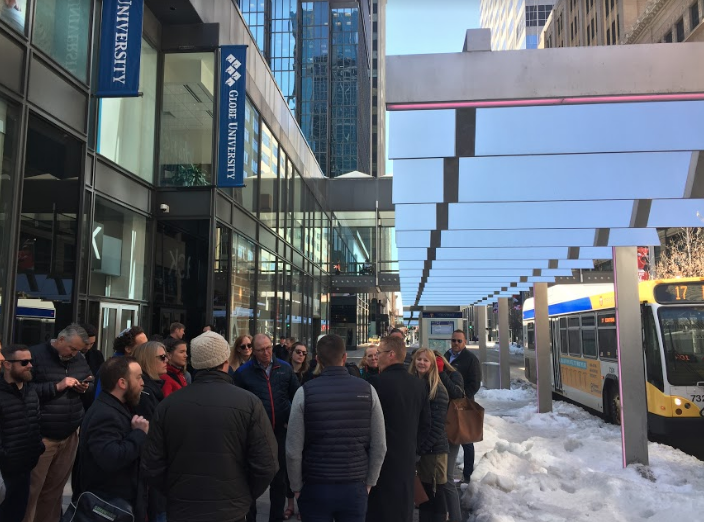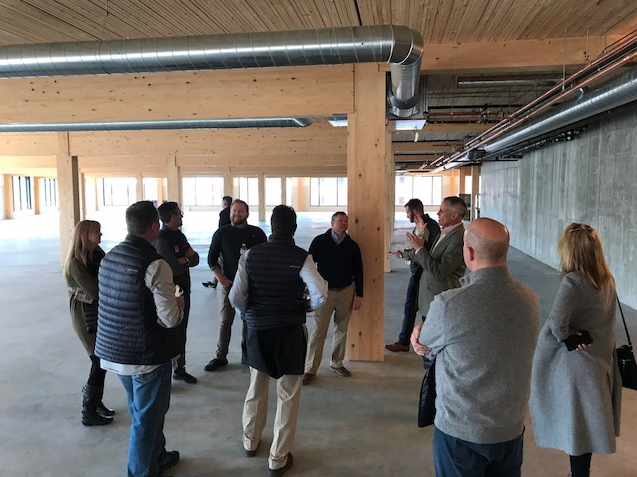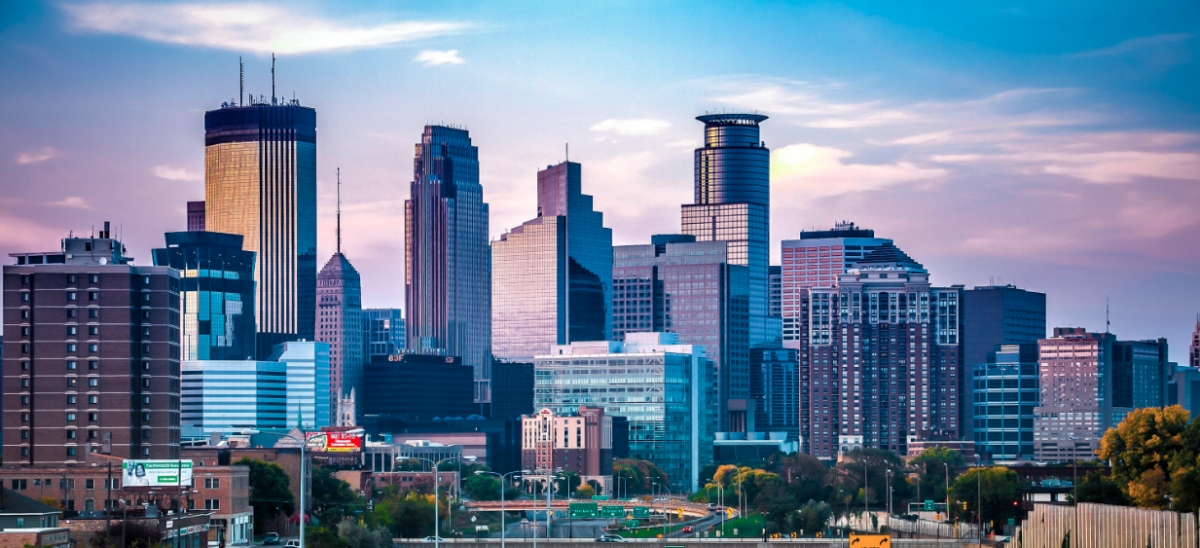The Downtown Alliance can learn from the successes of other neighborhoods and downtowns throughout the country. The Urban Exploration program brings public and private sector leaders together to learn about the best practices of other cities. This is the fifth in a series of annual trips sponsored by the Downtown Alliance to build relationships and learn from the success of other communities.
The Urban Exploration program is a working trip focused on building relationships and inspiring innovation in downtown Salt Lake City. This year's urban exploration participants will learn about downtown Minneapolis' recently completed developments, homeless services, public arts, parks and more.
This is the fifth in a series of annual trips sponsored by the Downtown Alliance to build relationships and learn from the success of other communities: we visited New York in 2014, Chicago in 2015, San Francisco in 2016 and Boston in 2017.
Lessons Learned - Nicollet Mall Panel:
Our group started off the day by speaking with members of the Minneapolis Downtown Improvement District and City officials to discuss lessons learned from the recently completed Nicollet Mall:
Don Elwood - Director of Transportation Engineering and Design (Minneapolis Gov)
Mary Altman - Public Arts Administrator (Minneapolis Gov)
Lisa Middag - Director of Urban Activation (Downtown Improvement District)
Nicollet Mall is a 12-block mall running through downtown Minneapolis and has been Minneapolis' civic "Main Street" for more than 100 years. People come to Nicollet to work eat and shop year-round, and it's the first impression many visitors get of the entire metro area. The street has been recently redesigned and will be formally finished in Spring of 2018 and construction free for the first time in over four years. But this complete overhaul did not come without some hardships. From lost business to construction headaches, the redesigned Nicollet has been a subject of controversy for Minneapolis elected officials, business leaders and the public. The redesigned Nicollet is expected to inject $105 million in new annual revenue, add nearly 3,000 jobs in downtown and increase property values in the area by $57 million.
This panel discussed the public-private partnership that led to the transformation of the Nicollet Mall and street redesign. Establishing trust and working with small businesses during the four-year construction process was heavily emphasized. As Salt Lake City continues to expand, learning from the successes and struggles of a large scale, complex project like Nicollet can help our City and private sector leaders better work together as new projects arise.
Nicollet Mall - "Nuts and Bolts" Tour:
After hearing from City leaders, our group headed out the Nicollet Mall to see some of the public art installations and intricate features discussed in our panel.
Designed by James Corner Field Operations with a deep respect for the history, identity and spirit of the place, the reimagined Nicollet retains the famous serpentine curve and offers new flexible spaces to support and enhance the existing outdoor cafes and other street activities. Generously-scaled and clearly marked walkways, curb-free intersections, new social spaces and destinations that are attractions year-round, and a curated outdoor gallery of public art offer pedestrians the highest quality downtown walking experience. Nicollet Center between 6th and 8th streets offers year-round comfortable seating, shaded by a row of native oak trees and artist-designed lanterns. The two-block-long outdoor corridor of programmable lights known as the Light Walk makes the Center a destination, a spectacular place for the public to gather and participate in a variety of informal and programmed events, festivals, performances and markets.

Optional Afternoon Activities:
Our tour of Nicollet Mall was followed by several optional activities that were strategically selected projects and initiatives that correlate to emerging initiatives and trends in downtown Salt Lake City – with a little bit of fun mixed in for good measure!
U.S. Bank Stadium Tour:
February's Super Bowl was a coming-out party of sorts for Minneapolis' brand new U.S. Bank Stadium. Even with the Vikings out of the big game, the Twin Cities had many reasons to show hometown pride. The crown jewel of Minneapolis' “Big Build", the U.S. Bank Stadium is part of an ongoing wave of public and private redevelopment that, when all investment is finished in 2025, will bring $2 billion of investment to Minneapolis over the next few years.
Tour leads included Downtown Alliance Board Chair Molly Mazzollini (Partner @ Infinite Scale) and SMG representatives. Infinite Scale worked with the Minnesota Vikings to create a Brand Integration Master Plan for their new home – U.S. Bank Stadium in downtown Minneapolis. A comprehensive signage and graphics system was developed to reflect the corporate partners' vision, while complementing the building structure and integrating seamlessly with the Vikings brand. In addition to this NFL stadium, Infinite Scale designed the experience for Target Field and the Courts at Mayo Clinic Square, the training facility for Minnesota Timberwolves and WNBA Champion Minnesota Lynx. 
T3 Tour - Mass Timber Office Development:
T3, the largest modern mass timber building in the USA is now complete. Featuring over 180,000 square feet of office space over 8 stories, the timber superstructure was installed in only 9.5 weeks. With the successful launch of T3 Minneapolis (timber, technology, transportation), tall wood construction in North America continues to reach new heights. Replacing traditional structural systems such as concrete and steel, prefabricated solid wood panels, such as Nail-Laminated Timber panels, create a construction method which is fast, clean, and sustainable–not to mention aesthetically pleasing.
We were joined by Bob Pfefferie (Managing Director, Hines Minneapolis) and Dusty Harris (Senior Managing Director, Hines Salt Lake City) for a walking tour of this innovative office product. 
Better Futures Minnesota Tour:
Better Futures Minnesota engages men who have had a history of incarceration, homelessness, poverty, and untreated mental and physical health challenges to help them achieve self-sufficiency and a better future for themselves and their communities. We seek to address this crisis through an evidence-based, integrated-care model that connects the men of Better Futures with the Four Fundamentals (health, housings, jobs, and coaching) and focuses on healing, personal accountability, and hard work—all of the parts working together to achieve personal transformation and positive outcomes. Since 2007, Better Futures Minnesota's unique model has helped men throughout Minnesota realize their potential for success and become responsible members of the community who earn wages, pay taxes and child support, and are self-sufficient and engaged in building their own success stories.
Our group was joined by Steve Thomas (Founder and Social Enterprise Development Officer, Better Futures), Thomas Adams (President & CEO, Better Futures) and Better Future staff for a tour of the Better Futures warehouse and an in-depth conversation about Better Futures mission. 
Reception and Lessons Learned at the Minneapolis Club:
Our group capped the day by sharing what we learned from our panels and afternoon tours in the historic Minneapolis Club Building.
The Minneapolis Club was founded in 1883 by leading Minnesota business and civic leaders, including John Pillsbury and Charles Loring. In its first 25 years, the club changed locations three times. It has been headquartered in its present location, however, since its opening in 1909.

